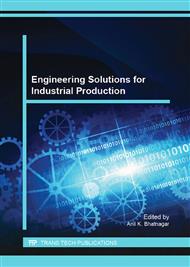p.204
p.209
p.214
p.219
p.224
p.229
p.237
p.243
p.247
Development of a Simulation Model of Cutting Slabs in a Continuous Casting Machine
Abstract:
In the article the development of a simulation model of cutting slabs in a continuous casting machine is considered. Simulation modeling is used to optimize the sequence of the melts supplied to the continuous casting machine. The goal of optimization is to reduce the deviation between the estimated and actual numbers of slabs, because such deviations can lead to missed deadlines. The model of cutting slabs has been designed with the use of a models creation module of the metallurgical enterprise information system. The models creation module supports the simulation model creation and multi agent simulation. Agents in the developed model are intended to describe the cutting slabs algorithm used by technologists in the metallurgical production. As a result of experiments with the model the following solution has been found. The following sequence of melts should be supplied to the continuous casting machine: initially the melts from the usual quality steel, followed the melts from the high quality steel.
Info:
Periodical:
Pages:
224-228
Citation:
Online since:
July 2015
Authors:
Price:
Сopyright:
© 2015 Trans Tech Publications Ltd. All Rights Reserved
Share:
Citation:


